Abstract
Several factors are behind the strong growth rate of 36.7% in Paraguay’s goods and services exports in 2023. First of all, agriculture is Paraguay’s main industry, and exports of soybeans and meat products in particular are thriving. Increasing global demand and rising prices are driving Paraguay’s export growth. Additionally, government economic policies and the promotion of foreign investment are also supporting the growth of the export industry. However, Paraguay’s economy remains challenged by imbalances and infrastructure and education need improvement. While sustainable growth and economic diversification remain challenges, current export growth demonstrates the strength of Paraguay’s economy.
Goods and Services (annual growth rate)
Timor-Leste’s annual growth rate for “goods and services” recorded an astounding 1,050% in 2019 but has now fallen to -4.22%. This rapid growth rate reflects the rapid growth that Timor-Leste experienced in a short period after independence, driven by an influx of international aid and investment. Immediately after independence, the economy experienced rapid growth as reconstruction and infrastructure development progressed. However, the momentum of growth has since slowed, and the growth rate is now declining as the economy matures. Timor-Leste’s economy remains dependent on oil and natural gas and is subject to fluctuations in resource prices and political instability. In addition, domestic industries have not developed or diversified, leaving the country vulnerable to external factors that affect its economic stability. These factors are contributing to a slower current growth rate compared to previous periods of rapid growth. Future challenges include the need for economic diversification and sustainable development.
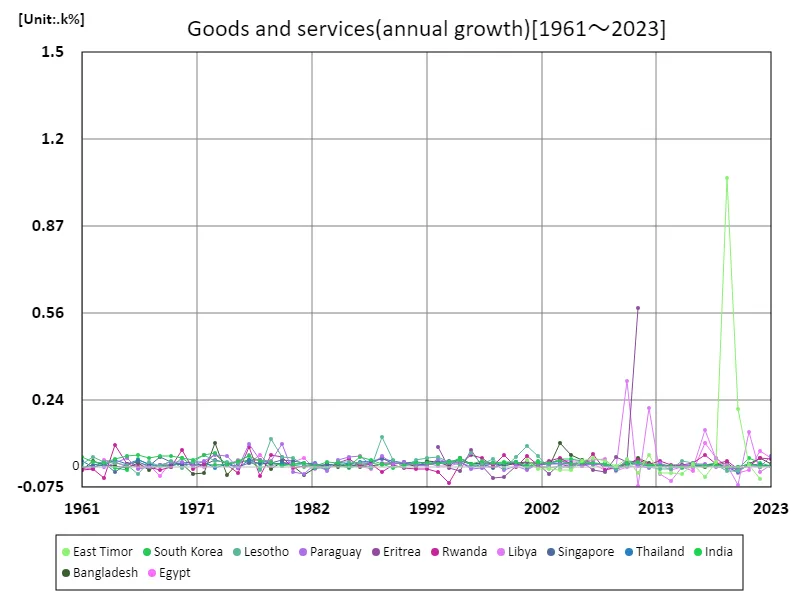
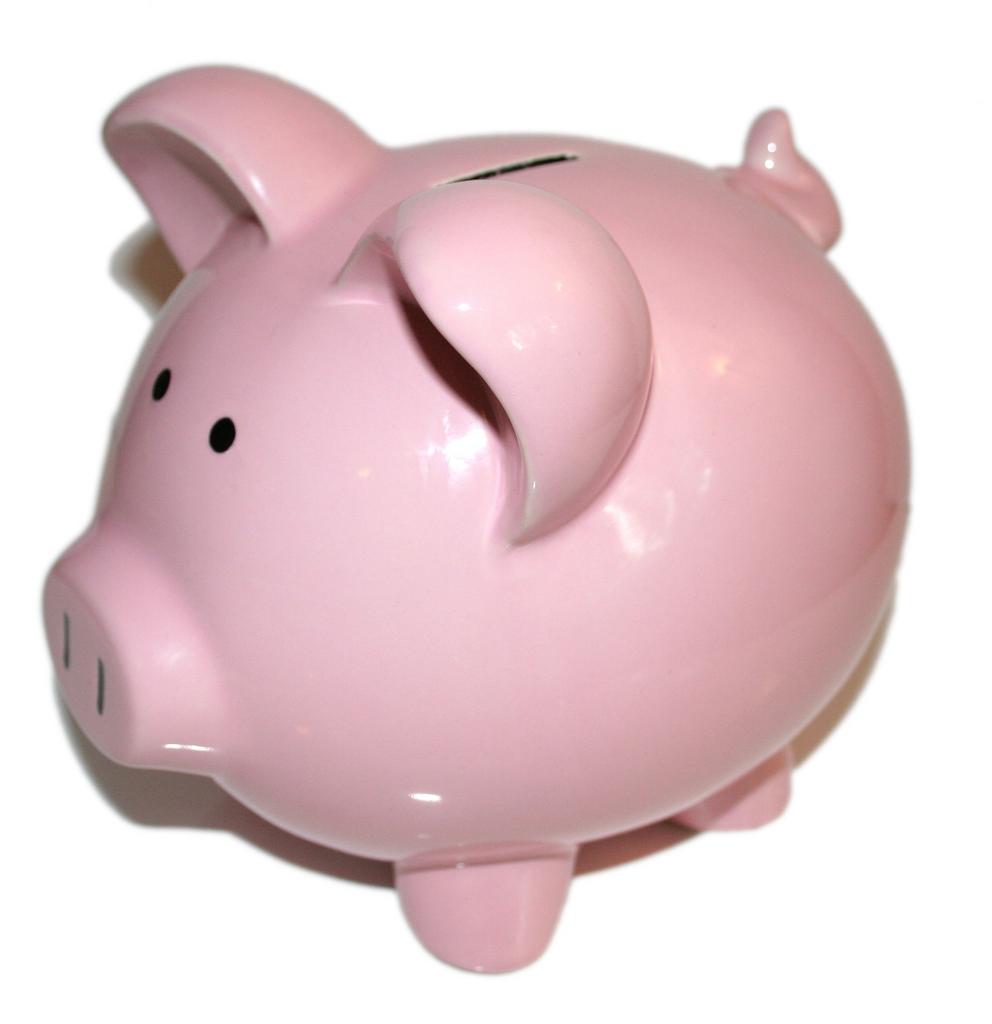
The maximum is 1.05k%[2019] of East Timor, and the current value is about -4.22%
Goods and Services (Annual Growth Rate) (Worldwide)
Timor-Leste’s annual growth rate for ”goods and services” reached an unprecedented 1,050% in 2019. This rapid growth is the result of an influx of international aid and investment following the country’s independence in 2002. Revenues from oil and natural gas in particular soared, supporting rapid economic growth. However, this rapid growth is not sustainable, and the growth rate has now turned negative at -4.22%. There are multiple factors behind this fluctuation. First, due to its high resource dependency, it is directly affected by price fluctuations in the global energy market and political instability. Additionally, the lack of progress in developing national infrastructure and diversifying industries has also contributed to the lack of sustainability of economic growth. Moreover, political instability and governance challenges undermine economic stability. As a result, the momentum of the rapid growth period has subsided and growth is now stagnating. In the future, Timor-Leste’s economy will need to move away from its dependency on resources and work toward industrial diversification and sustainable development.
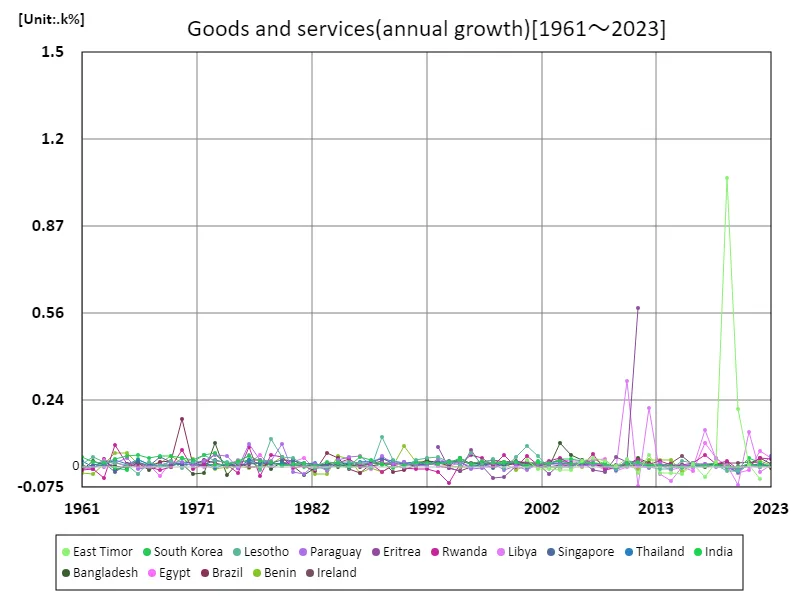

The maximum is 1.05k%[2019] of East Timor, and the current value is about -4.22%
Goods and Services (Annual Growth Rate) (World Countries, Latest Year)
The annual growth rates of goods and services in the world’s economies are diverse and vary widely depending on each country’s economic situation and industrial structure. According to the latest data for 2023, Samoa is expected to record a high growth rate of 136%, due in part to revitalization of the tourism and fishing industries. Meanwhile, the overall average growth rate was 5.1%, which is an indicator of global economic growth. The combined growth rate of 647% represents a long period of diversified economic growth, reflecting particularly rapid growth in emerging and resource-dependent countries. The data highlights imbalances in the global economy and different levels of development. Countries with high growth rates have abundant resources, concentrated investment, and relaxed regulations as driving forces for their economic growth, but they also face challenges regarding sustainability and economic stability. Additionally, countries with low growth rates may have political instability or a lack of industrial diversification that is holding back growth. Future challenges will require economic diversification, development of social infrastructure, and innovation in education and technology in order to achieve sustainable growth. In particular, efforts toward the Sustainable Development Goals (SDGs), such as environmental awareness and poverty reduction, are becoming important issues in countries around the world.
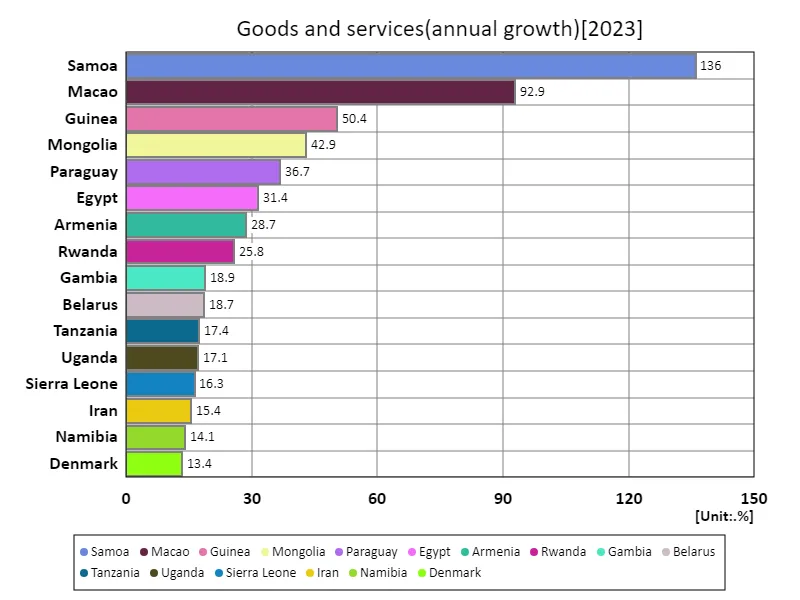

The maximum is 136% of Samoa, the average is 5.12%, and the total is 646%
Goods and Services (Annual Growth Rate) (Region, Latest Year)
Regarding the annual growth rate of global goods and services, the 2023 data shows diversity. The Central African Republic recorded the highest growth rate of 18.4 percent, mainly driven by agriculture and natural resource-related growth. The general average growth rate was 4.05%, reflecting the steady growth of the global economy as a whole. The combined growth rate of 40.5% represents an accumulation of global economic growth over a long period of time, suggesting a large contribution from emerging countries and fast-growing regions. The data clearly show regional variations in economic growth and industrial structure. In countries and regions with high growth rates, resource utilization, investment revitalization, and policy reforms are stimulating economic growth, but there are also concerns about economic instability and social imbalances. In regions with low growth rates, economic challenges and ensuring sustainable growth are a challenge. Looking ahead, we need to work towards achieving the Sustainable Development Goals (SDGs), promote technological innovation, and adapt to changes in the global market. In particular, environmental issues and the development of social infrastructure will be important challenges. Global economic growth needs to focus on balanced development and inclusiveness.
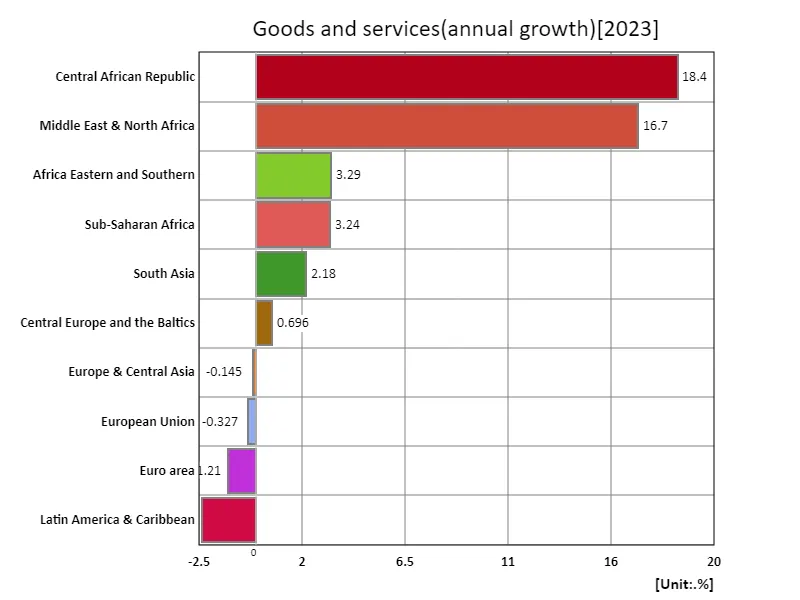

The maximum is 18.4% of Central African Republic, the average is 4.05%, and the total is 40.5%
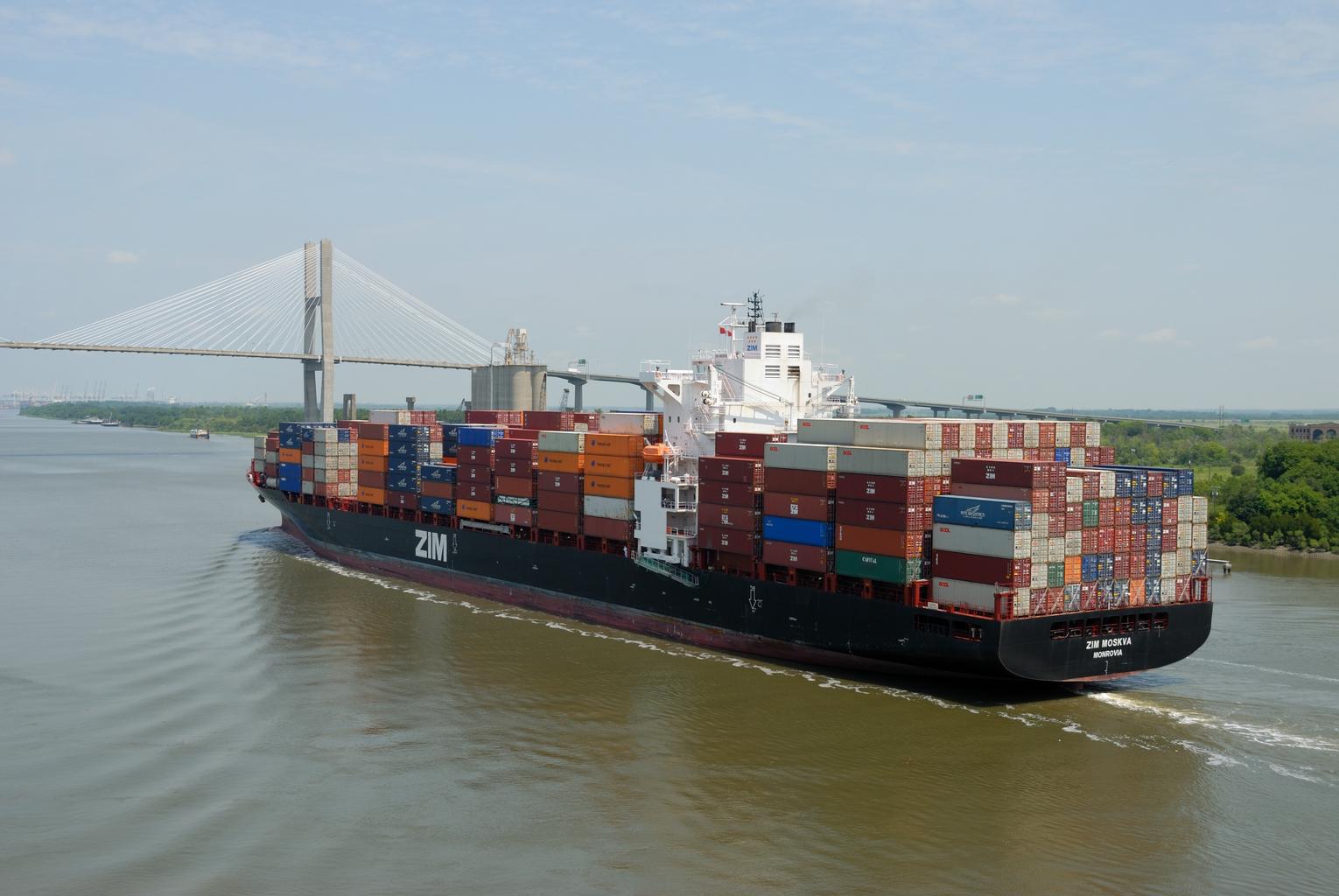


Comments